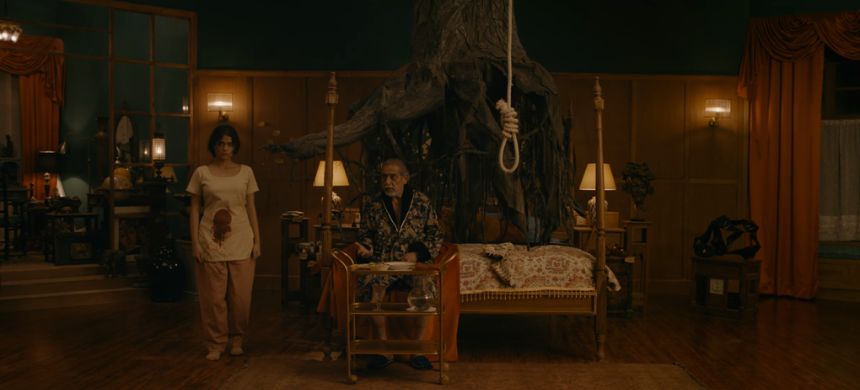Asim Abbasi’s latest OTT release, Barzakh, premiered its first episode on Friday, featuring Salman Shahid as the affluent Jafar Khanzada. Jafar, a character who has risen from modest beginnings to wealth, is about to marry the ghost of his deceased lover, Mahtab (Anika Zulfikar). The story unfolds with Jafar summoning his two sons, Shehryar (Fawad Khan) and Saifullah (Fawad M Khan), and is accompanied by the enigmatic Scheherezade (Sanam Saeed), his caretaker and daughter figure.
The show’s cinematography, under Mo Azmi’s skillful direction, bathes the narrative in a warm, misty teal and orange palette, creating an atmosphere of perpetual melancholy. Abbasi, in collaboration with Azmi, transforms the lush Hunza Valley into a visually stunning backdrop, marking Barzakh as Abbasi’s most distinctive work yet. This approach builds on his previous cinematic style, as seen in Cake and Churails, by creating a unique visual and thematic vocabulary.
Also Read: Inside Out 2 Surpasses Incredibles 2 as Pixar’s Highest-Grossing Film Ever
In Barzakh, Abbasi continues to explore the dynamics between wealth and poverty, a theme prominent in his past works. His portrayal of the rich, juxtaposed with the disenfranchised, stands in contrast to the often morally charged depictions seen in Pakistani television. Abbasi’s depiction of class is less sanctimonious and more focused on the spectacle and anxieties surrounding socioeconomic divides.
Historically, Pakistani cinema has portrayed class disparity through a moral lens, as seen in films like Tehzeeb and Zubaida. Abbasi’s work, however, seeks to depict wealth and privilege without the overt moral judgments of previous eras, drawing inspiration from a broader cinematic tradition that includes critiques of the elite without necessarily condemning them.
In a world where cinema often tilts towards relatability and escapism, Abbasi’s Barzakh promises to offer a fresh perspective on the upper class, blending rich thematic content with visually compelling storytelling.










